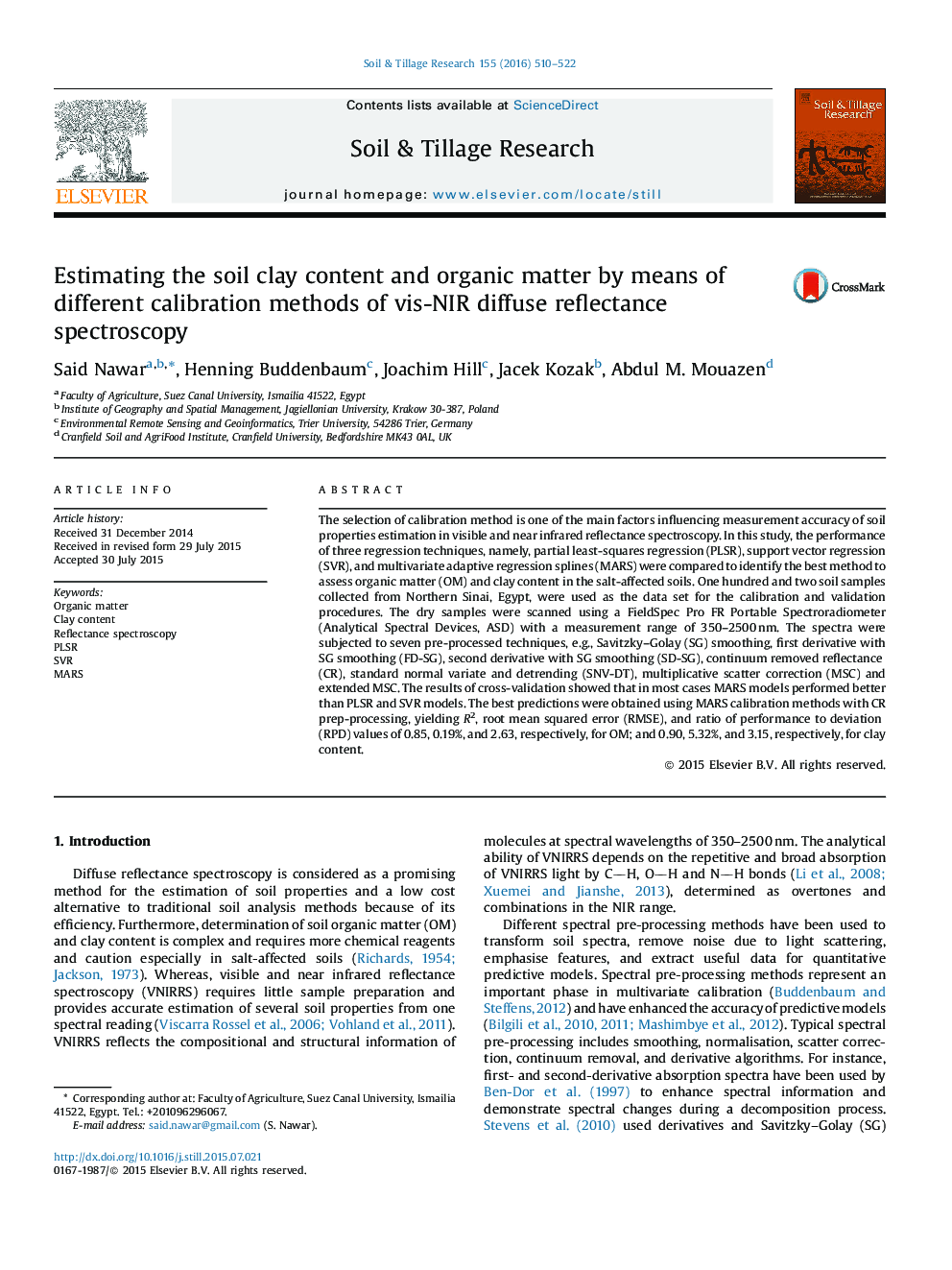| کد مقاله | کد نشریه | سال انتشار | مقاله انگلیسی | نسخه تمام متن |
|---|---|---|---|---|
| 305508 | 513031 | 2016 | 13 صفحه PDF | دانلود رایگان |
• We compared PLSR, SVM and MARS methods for estimating soil OM and clay content.
• The vis-NIR spectra were pre-processed using seven techniques.
• The best predictions were obtained using the MARS calibration methods.
The selection of calibration method is one of the main factors influencing measurement accuracy of soil properties estimation in visible and near infrared reflectance spectroscopy. In this study, the performance of three regression techniques, namely, partial least-squares regression (PLSR), support vector regression (SVR), and multivariate adaptive regression splines (MARS) were compared to identify the best method to assess organic matter (OM) and clay content in the salt-affected soils. One hundred and two soil samples collected from Northern Sinai, Egypt, were used as the data set for the calibration and validation procedures. The dry samples were scanned using a FieldSpec Pro FR Portable Spectroradiometer (Analytical Spectral Devices, ASD) with a measurement range of 350–2500 nm. The spectra were subjected to seven pre-processed techniques, e.g., Savitzky–Golay (SG) smoothing, first derivative with SG smoothing (FD-SG), second derivative with SG smoothing (SD-SG), continuum removed reflectance (CR), standard normal variate and detrending (SNV-DT), multiplicative scatter correction (MSC) and extended MSC. The results of cross-validation showed that in most cases MARS models performed better than PLSR and SVR models. The best predictions were obtained using MARS calibration methods with CR prep-processing, yielding R2, root mean squared error (RMSE), and ratio of performance to deviation (RPD) values of 0.85, 0.19%, and 2.63, respectively, for OM; and 0.90, 5.32%, and 3.15, respectively, for clay content.
Journal: Soil and Tillage Research - Volume 155, January 2016, Pages 510–522
